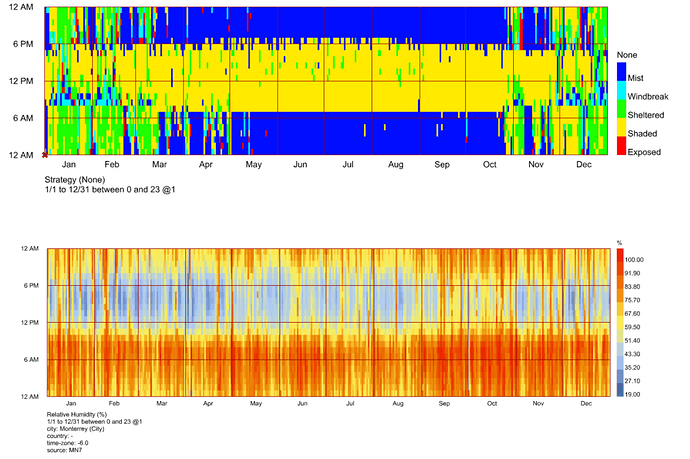Hi everyone,
I’m Julio, and I’m working on a simple tool to assess which strategies are most effective for achieving outdoor thermal comfort throughout the year. The idea is to move beyond a basic dry-bulb temperature heatmap and provide a more intuitive overview of the climate. In this case, I’ve included several common strategies, such as shelter, which offers protection from both wind and sun, shade, which only blocks solar radiation, wind breaks, which solely reduce wind exposure, exposed conditions where no intervention is needed, and mist, which relies on evaporative cooling.
I have a clear understanding of how to apply most of these measures, but I’m struggling with how to realistically implement mist. In my current analysis, mist is often identified as the most effective strategy during the night, even when relative humidity is already high. This seems counterintuitive because I would expect UTCI to indicate a more uncomfortable sensation due to the high moisture levels.
Does this reasoning make sense? Could someone clarify if I’m missing something in how mist should be modeled for outdoor comfort studies? I’d appreciate any insights on how to apply this strategy more realistically.
Thanks in advance!
